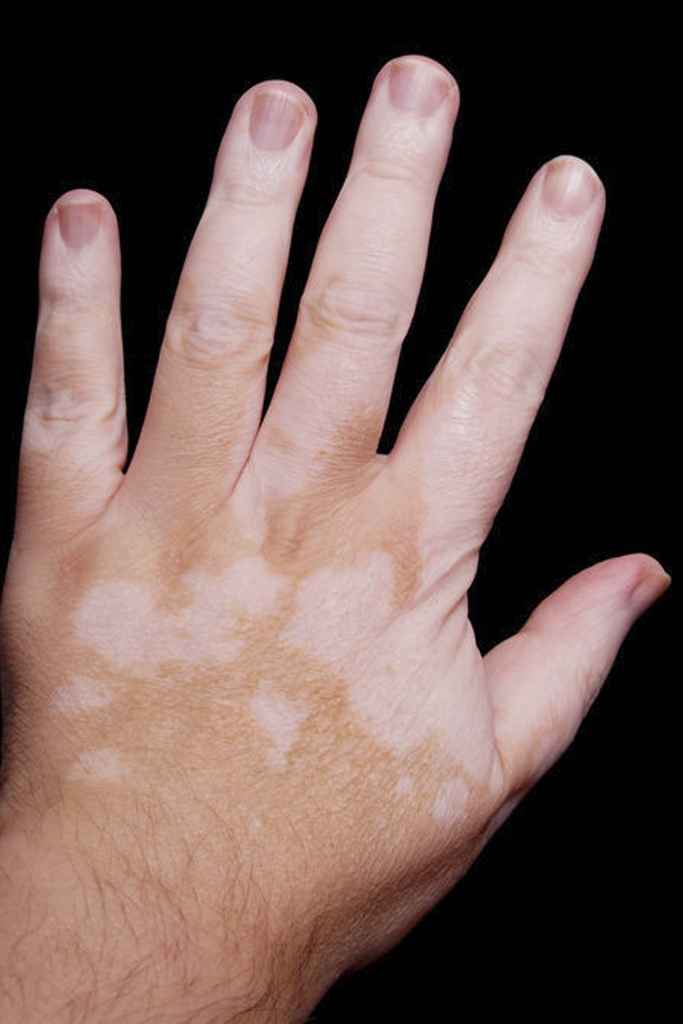 Vitiligo is characterized by the absence of pigment or color in patches that can occur throughout the body. The rate and the extent of pigment loss is unpredictable but is known to occur on areas of trauma.
Vitiligo is characterized by the absence of pigment or color in patches that can occur throughout the body. The rate and the extent of pigment loss is unpredictable but is known to occur on areas of trauma.
What is Melanin?
Melanin is the pigment that determines skin and hair color. Vitiligo occurs when the cells that produce melanin, melanocytes, die. It can affect people of all skin types but is more noticeable in people with darker skin. Vitiligo is not life-threatening or contagious, however it may affect one’s self-esteem and can increase risk of sunburns. Vitiligo most commonly affects the areas around the mouth, nose, eyes, hands, feet, and genitals. It can also affect the hair follicles creating patches of white hair. It can appear all over the body or only in a few areas at a time, at any age; however, it most often occurs in individuals during their early to mid-20’s.
Causes of Vitiligo
It is unclear what causes melanocytes in vitiligo to die. Certain causes may be:
- An auto-immune process that destroys melanocytes in affected areas
- Triggers such as stress, sun-exposure, or physical trauma
- Exposure to industrial chemicals
Vitiligo Treatment
There is currently no cure for vitiligo but there have been several advances in the last few years. Most commonly the combination of topical creams and laser or light therapy can help restore pigmentation to the skin. Skin grafting is another option in more resistant sites. Some choose not to treat their vitiligo as they are not bothered by the appearance, and only sun protection is advised.
For more information on vitiligo, be sure to contact Nova Dermatology today.


